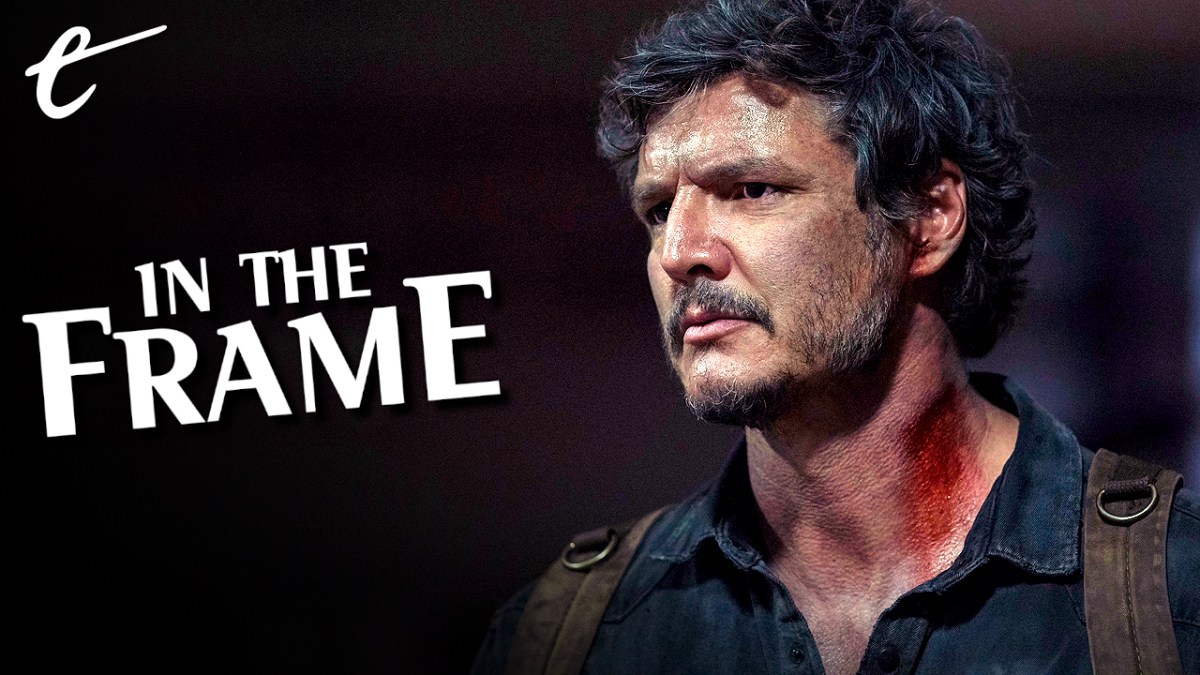This article contains spoilers for The Last of Us on HBO in its discussion of the utility of violence.
The Last of Us wrapped up a phenomenal first season yesterday evening. Showrunners Craig Mazin and Neil Druckmann crafted a compelling prestige drama, a post-apocalyptic story about parenthood, codependency, and the gulf between surviving and living.
However, The Last of Us was also remarkable as a study of violence. Over the course of its nine episodes, the show returned time and again to the idea that violence is not something that is simply inflicted on its intended target. Instead, The Last of Us suggests that violence is ultimately something that the perpetrator carries with them. It’s an intriguing approach to take towards violence, particularly in the context of a setting where violence is not only common, but often necessary.
Depictions of violence on screen are inherently complicated. Critic and filmmaker François Truffaut famously argued that there is “no such thing as an anti-war film,” because any depiction of war inevitably glorifies it. There is a similar argument to be made about violence. Violence can often be cathartic for an audience, particularly given how visual depictions often sanitize the act to make it more palatable to the viewer. Even if violence is unpalatable, it is often justified as a means of survival.
This was one of the tensions within The Last of Us as a video game. The narrative depicts Joel (Troy Baker) as a reluctant and traumatized fighter who is burdened by the terrible things that he has done to survive, but the gameplay frequently invites the player to take satisfaction in shooting and destroying combatants — both human and infected. Game designer Clint Hocking has described this internal conflict, which is not uncommon in video games, as “ludonarrative dissonance.”
As critic David Sims noted, part of what made the game’s ending so effective was the way that it weaponized that internal contrast, as “the player wasn’t being rewarded for killing their way to the ending, but instead being asked to think about how they’d gotten there.” Chris Plante contended that the ending was so effective because it shattered the assumptions that “the empathic Joel in the cut scenes is different than the psychopathic Joel we play as.” In short, it collapses player and character.
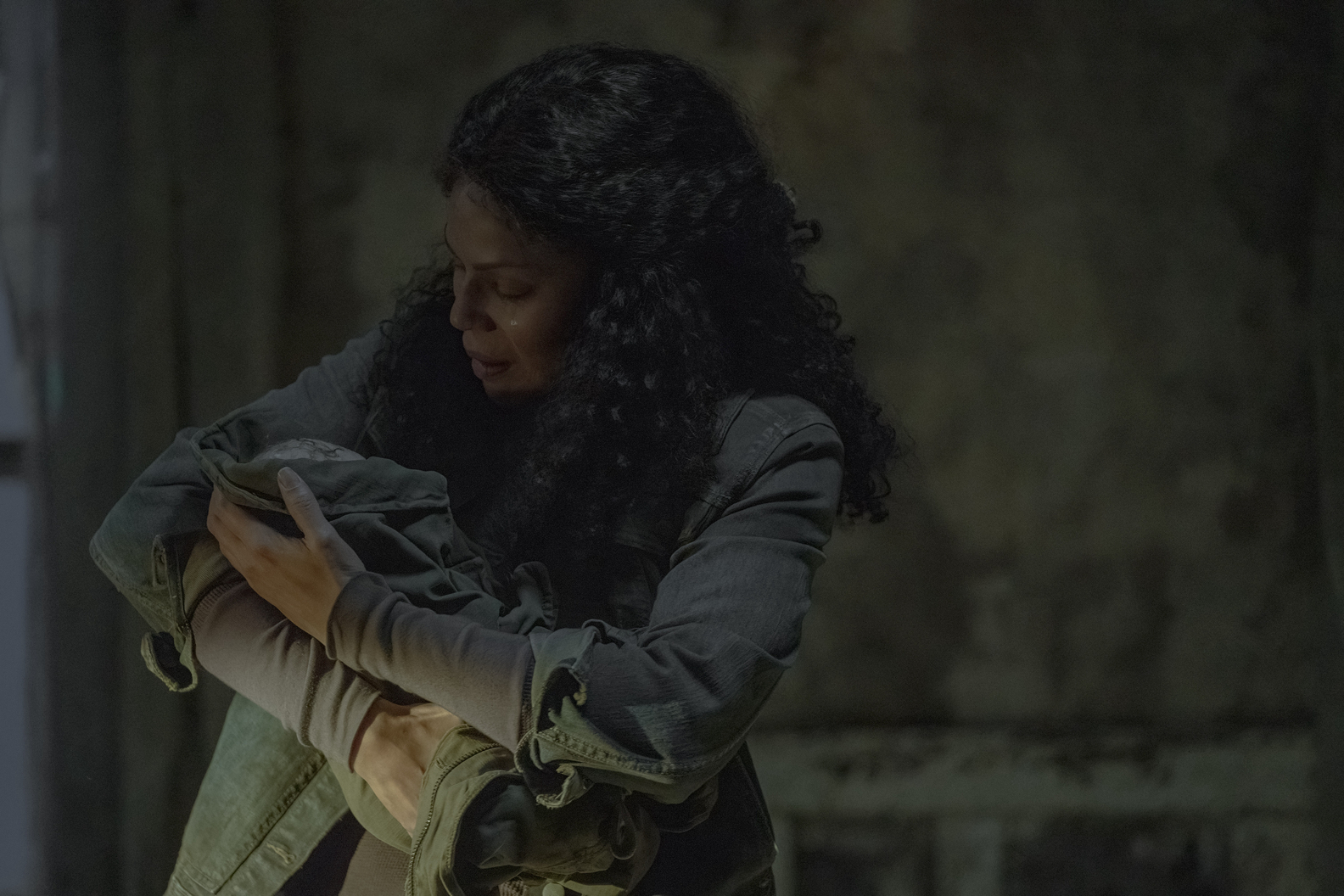
That is obviously impossible to replicate in a narrative television show, in which the audience is composed of viewers rather than players. Still, Mazin and Druckmann manage something similar in their depiction of violence, by collapsing the distance between victim and perpetrator. Throughout the first season of The Last of Us, the show consistently contends that any act of violence is ultimately reflexive, that it wounds the person inflicting it as much as the person receiving it.
This is reflected narratively, thematically, and even visually. Although The Last of Us features a number of tense and impressive action sequences, notably in episodes like “Infected” and “Endure and Survive,” it returns time and again to a visual shorthand for acts of violence. The camera rarely focuses on the individual being shot or stabbed. Instead, the audience is invited to study the face of the person pulling the trigger or holding the knife.
This is not a novel approach. It’s interesting that Akiva Goldsman has argued that the sequel to I Am Legend will be inspired by The Last of Us, because the show clearly owes a debt to that original film. It is perhaps most obvious in the show’s opening scene, which is very similar to the opening scene of I Am Legend. However, the show also borrows a lot from one of the most emotional moments in the film, wherein Robert Neville (Will Smith) has to suffocate his infected dog, Sam.
That scene is remarkable, because director Francis Lawrence understands one of the key rules of populist storytelling: never kill the dog. Rather, Lawrence understands the obvious way around it. The camera doesn’t show Sam’s death. Instead, it holds on Robert’s face. It lets the scene play long, trusting Smith to communicate everything the audience needs to know about the horror of what is happening. Sam is dead, but Robert is the one who is going to have to live with it.
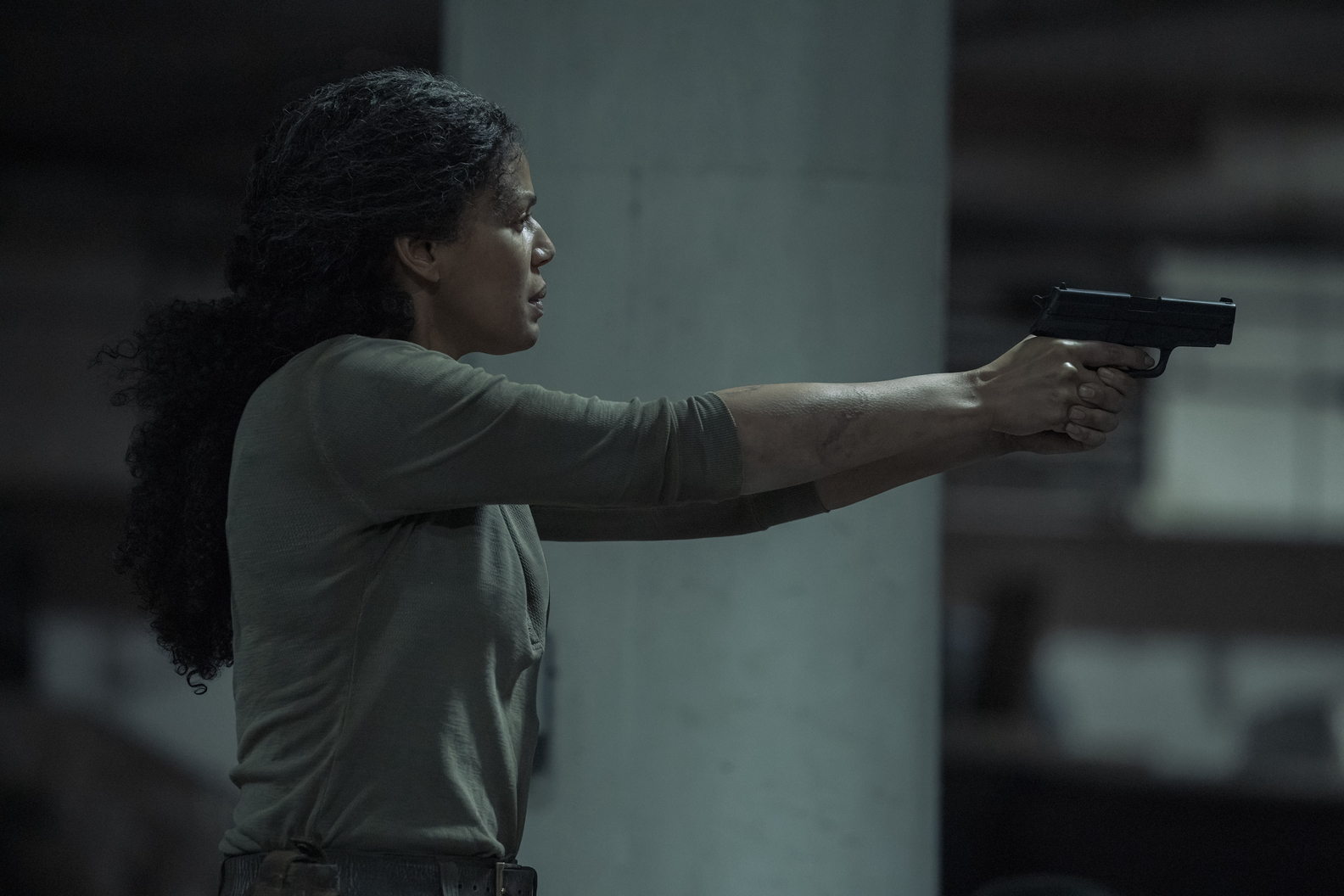
This scene is a touchstone for The Last of Us. During many moments of violence, the show doesn’t depict the acts themselves; it holds on the person committing the act. Around the midpoint of “When You’re Lost in the Darkness,” an infected child (Logan Pierce) stumbles into the Boston Quarantine Zone. As the child is euthanized, the camera holds on the face of the guard (Khadijah Roberts-Abdullah) reassuring him. When the boy’s body is thrown into a fire pit, his face is covered, but the camera focuses on Joel (Pedro Pascal) as he disposes of the body.
There is a sense that these violent acts do not linger with the victim. The consequences are immediate. In most cases, the victims are killed by the act itself. In many instances over the course of The Last of Us, there is some argument over whether the victims were ever alive in a meaningful way. Instead, it is the perpetrator who has to carry that violence with them, the experience and the memory of the act. It is a wound inflicted on oneself.
In “Please Hold to My Hand,” Joel’s murder of an attacker named Bryan (Juan Magana) takes place off-screen, the camera holding on Ellie (Bella Ramsey) as she listens to the act. Later in the episode, Kathleen (Melanie Lynskey) murders the imprisoned Doctor Edelstein (John Getz). The shot is framed so that Edelstein is entirely offscreen; Kathleen simply raises her sidearm and fires a shot into the container housing Edelstein. The camera cuts to another angle on Kathleen; we never see the body.
This idea is literalized with Joel himself. In “Long, Long Time,” Joel tells Ellie that he got the scar on his head when “someone shot at me and missed.” When Ellie asks if Joel “got him,” Joel replies, “No, I missed too.” In “Please Hold to My Hand,” Ellie notes that Joel is slightly deaf in his right ear. “Is it ‘cause you were shot there?” she asks. Joel responds, “Probably more from shootin’. So if you want to keep your hearing, stick to that knife.”
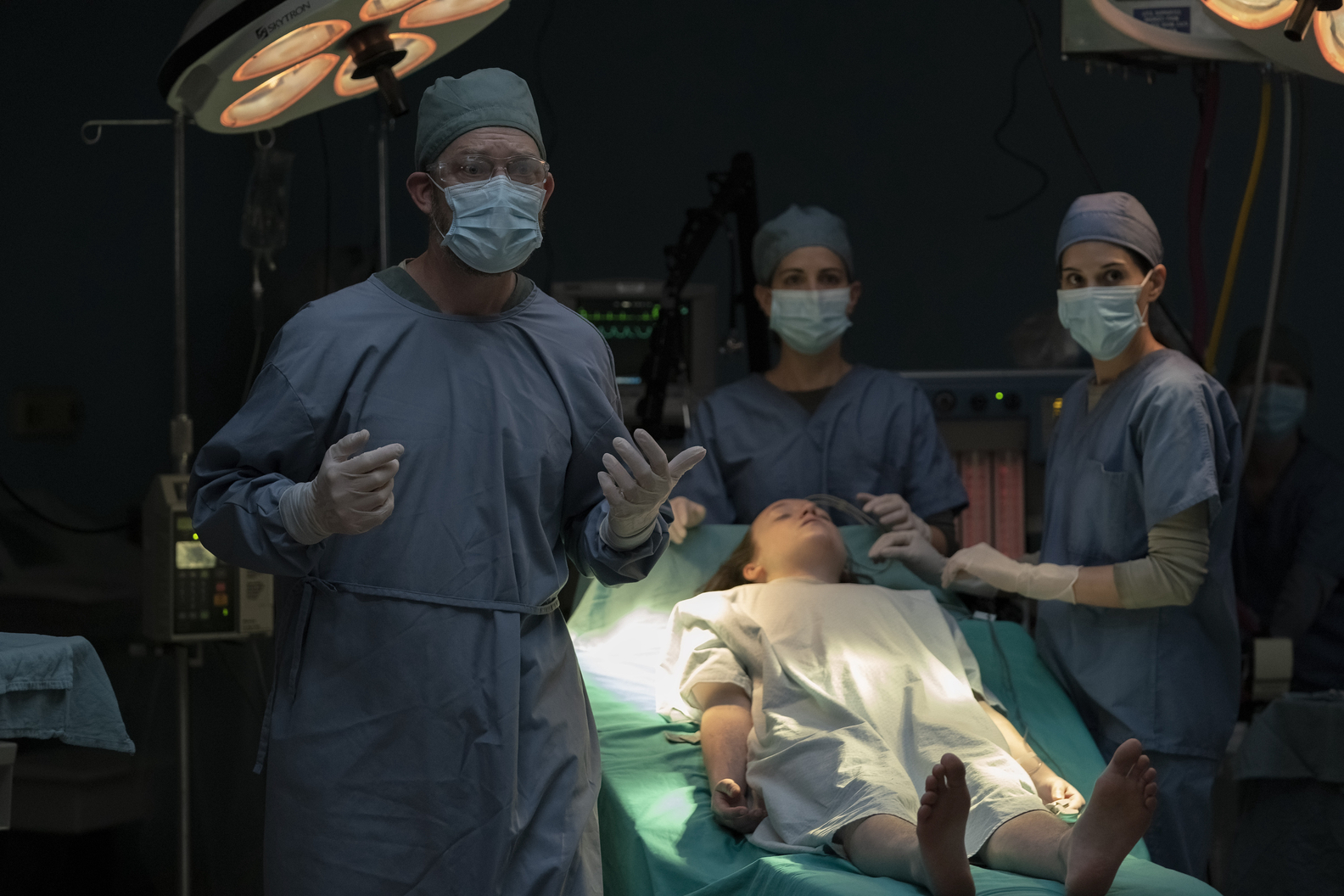
In the season finale, “Look for the Light,” these exchanges are recontextualized. Joel confesses that the wound was self-inflicted. “It was me,” he admits. “I was the guy who shot and missed.” It was a suicide attempt following the death of his daughter Sarah (Nico Parker). “There’s no story,” he confesses to Ellie. “Sarah died, and I couldn’t see the point anymore. Simple as that.” It’s a very literal expression of the idea that victim and perpetrator are not separate and distinct classes; they are one and the same.
This is particularly true of children. Throughout The Last of Us, the idea that children might be forced to resort to violence is treated as a moral failing on the part of their guardians. “Please Hold to My Hand” is bookended with scenes of kids pointing guns, Ellie in the opening scene and Sam (Keivonn Montreal Woodard) in the closing shot. Indeed, throughout the show, Joel tries to take some of that violence unto himself as a way of protecting Ellie.
It doesn’t work. During Bryan’s attack on Joel, Ellie shoots Bryan, incapacitating him. Again, the show’s gaze remains fixed on Ellie as she pulls the trigger; it then cuts to a close-up, still on Ellie. In the season’s penultimate episode, “When We Are In Need,” Joel is incapacitated and Ellie is left to fend for herself. Her killing of cannibalistic cult leader David (Scott Shepherd), after his attempted sexual assault of her, is shot in a similar manner. As she hacks at him, the camera stays on her. She will carry this with her.
In “Please Hold to My Hand,” Joel is ashamed that Ellie had to shoot Bryan to protect him. He is a surrogate father to her; this role comes with a responsibility to shield her from such violence. He struggles to articulate this feeling, telling Ellie “You’re just a kid. You shouldn’t have to know what it means to…” He presses the point, “I mean it’s my fault. You shouldn’t have had to. And I’m sorry.” The idea is that he should have to carry it for both of them.
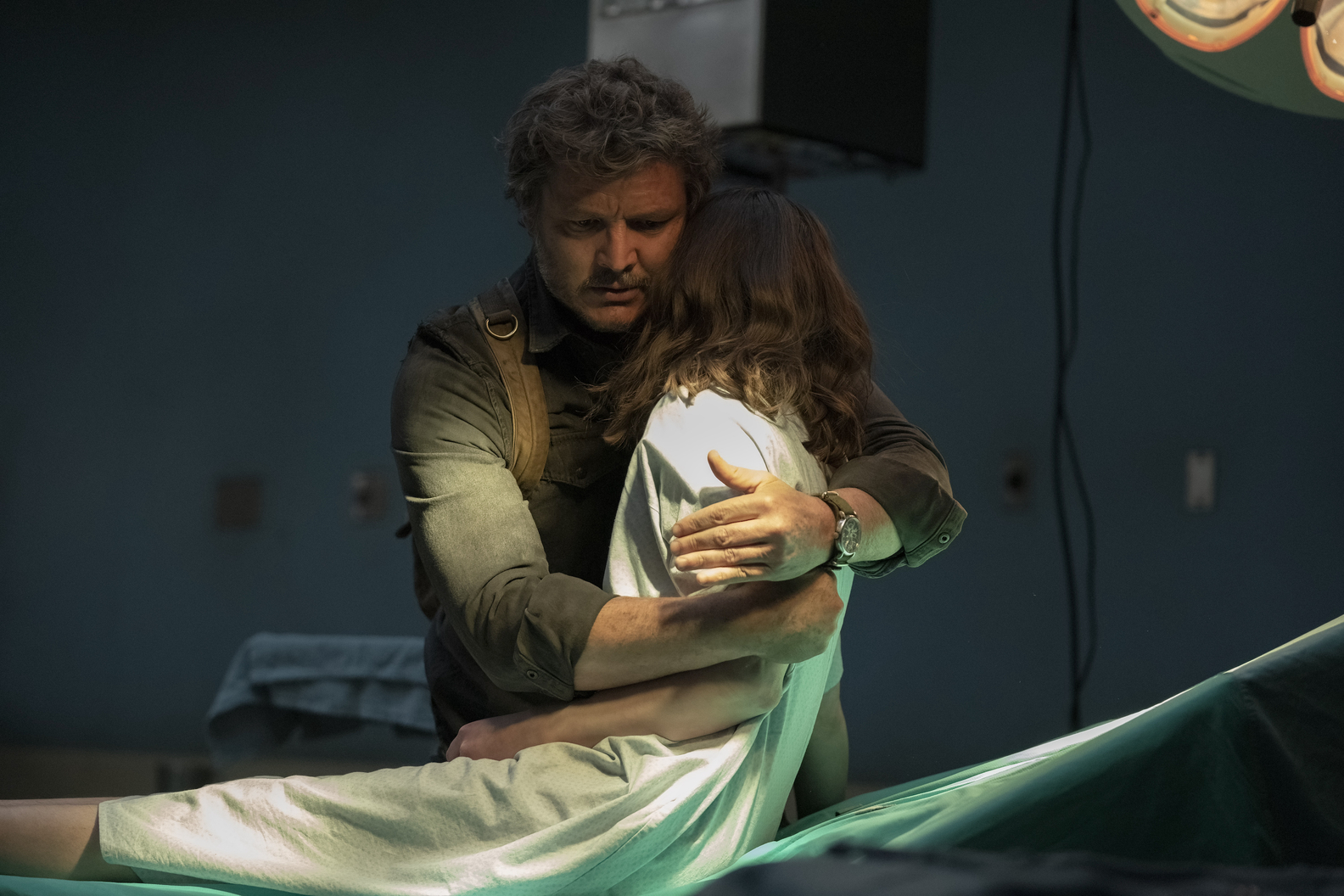
Of course, the great tragedy of The Last of Us is that Ellie doesn’t have any innocence to preserve. “It wasn’t my first time,” she confesses to Joel after shooting Bryan. In “Infected,” she explains to Tess (Anna Torv) about how she was attacked by an infected person in an abandoned mall. “So it was just you in there, alone?” Tess asks. After a beat, Ellie responds, “Yeah.” The season’s seventh episode, “Left Behind,” reveals this is as much a mistruth as Joel’s account of the firefight that scarred him.
Ellie didn’t break into the mall by herself. She was taken by her friend, Riley (Storm Reid). While there, they were both bitten by an infected individual. Ellie didn’t turn because she has immunity from infection. Riley was not so lucky. Although Ellie kills their attacker, the implication is that Riley most likely turned and Ellie probably had to kill her. “Left Behind” doesn’t depict any of this. The last shot of Riley is her cradling Ellie. However, the audience knows what Ellie carries with her.
“Look for the Light” represents an interesting culmination of these themes and ideas. The episode’s opening scene is a flashback, revealing that Ellie’s mother Anna (Ashley Johnson) was bitten shortly before giving birth. Her friend Marlene (Merle Dandridge) takes the baby but understands that Anna needs to be killed. Again, the show depicts violence by focusing on Marlene as she pulls the trigger. The audience doesn’t see the bullet hit Anna, nor does it see her dead body. That is on Marlene.
However, there is an appreciable shift at the climax of the episode, as Joel murders his way through a hospital to prevent doctors from euthanizing Ellie to harvest her immunity to create a vaccine. Initially, the scene focuses tightly on Joel, staying on him as he pulls the trigger, watching him swap weapons, tracking the bullet casings as they hit the ground. However, “Look for the Light” then does something striking. It shows the dead bodies. It reveals the consequences of the carnage.
The last person that Joel kills during this rampage is Marlene, and the way that the execution is presented marks a departure from earlier scenes. Both Joel and Marlene are visible in the frame as he pulls the trigger. It’s shocking and effective, precisely because The Last of Us has been so restrained to this point. After a season focusing on the toll violence takes on the perpetrator, The Last of Us takes a wider look and suggests that both parties suffer. Violence cuts both ways.

